https://ohiostate.pressbooks.pub/graphicshistory/back-matter/cg-historical-timeline/
1938
Valensi proposes color TV
1939
Bill Hewlett and Dave Packard design the Audio Oscillator
1949
- John Whitney enters first International Experimental Film Competition in Belgium
- Mary Ellen Butte
1950
- Cybernetics and Society – Norbert Weiner (MIT)
- Ben Laposky uses oscilloscope to display waveforms which were photographed as artwork
1951
- Graphics display on vectorscope on Whirlwind computer in first public demonstration
1955
- SAGE system at Lincoln Lab uses first light pen (Ivan Sutherland)
1956
- Lawrence Livermore National Labs connects graphics display to IBM 704; use film recorder for color images
1958
- Saul Bass creates titles for Hitchcock’s Vertigo
- Integrated circuit (IC, or Chip) invented by Jack St. Clair Kilby of Texas Instruments and Robert Noyce of Fairchild Electronics
- John Whitney Sr. uses analog computer to make art
1960
- William Fetter of Boeing coins the term “computer graphics” for his human factors cockpit drawings
- John Whitney Sr. founds Motion Graphics, Inc.
- LISP developed by John McCarthy
- DEC PDP-1 introduced
1961
- Spacewars, 1st video game, developed by Steve Russell at MIT for the PDP-1
1963
- 1st computer art competition, sponsored by Computers and Automation
- Sketchpad developed beginning in 1961 by Ivan Sutherland at MIT is unveiled Mouse invented by Doug Englebart of SRI
- Coons’ patches
- Early computer generated film by Edward Zajac (Bell Labs)
- Michael Noll (Bell Labs) starts his Gaussian Quadratic series of artwork

- Roberts hidden line algorithm (MIT)
- The Society for Information Display established
- Fetter of Boeing creates the “First Man” digital human for cockpit studies
1964
- Project MAC (MIT)
- IBM 2250 console ($125,000) introduced with IBM 360 computer
- Poem Field by Stan Vanderbeek and Ken Knowlton
- Ruth Weiss introduces drawing software that performs hidden line elimination
- Electronic character generator
- RAND tablet input device (commercially known as Grafacon)
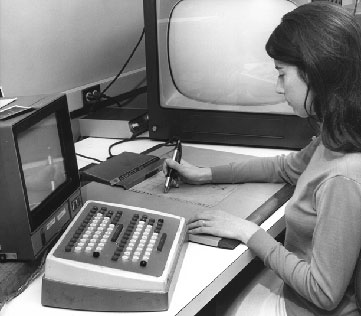
1965
- 1st computer art exhibition, at Technische Hochschule in Stuttgart
- Utah computer science department founded
- Bresenham Algorithm for plotting lines
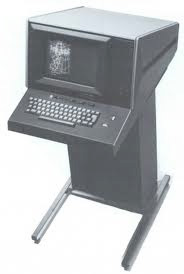
Tektronix DVST - Tektronix Direct View Storage Tube (DVST)
- 1st U.S. computer art exhibition, at Howard Wise Gallery in New York
1966
- Odyssey, home video game developed by Ralph Baer of Sanders Assoc., is 1st consumer CG product
- Plasma Panel introduced (first developed at Illinois in 1964 as part of the PLATO project)
-
Studies in Perception - Studies in Perception I by Ken Knowlton and Leon Harmon (Bell Labs)
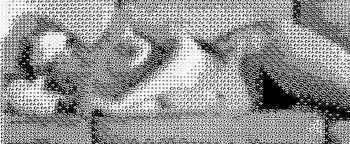
- MAGI founded by Phil Mittleman
- Experiments in Art and Technology (E.A.T.) started in New York by artist Robert Rauschenberg and Bell Labs engineer Billy Klüver
- IBM awards Artist-in-Residence to John Whitney, Sr.
- Loutrel hidden line algorithm
- Lincoln Wand developed
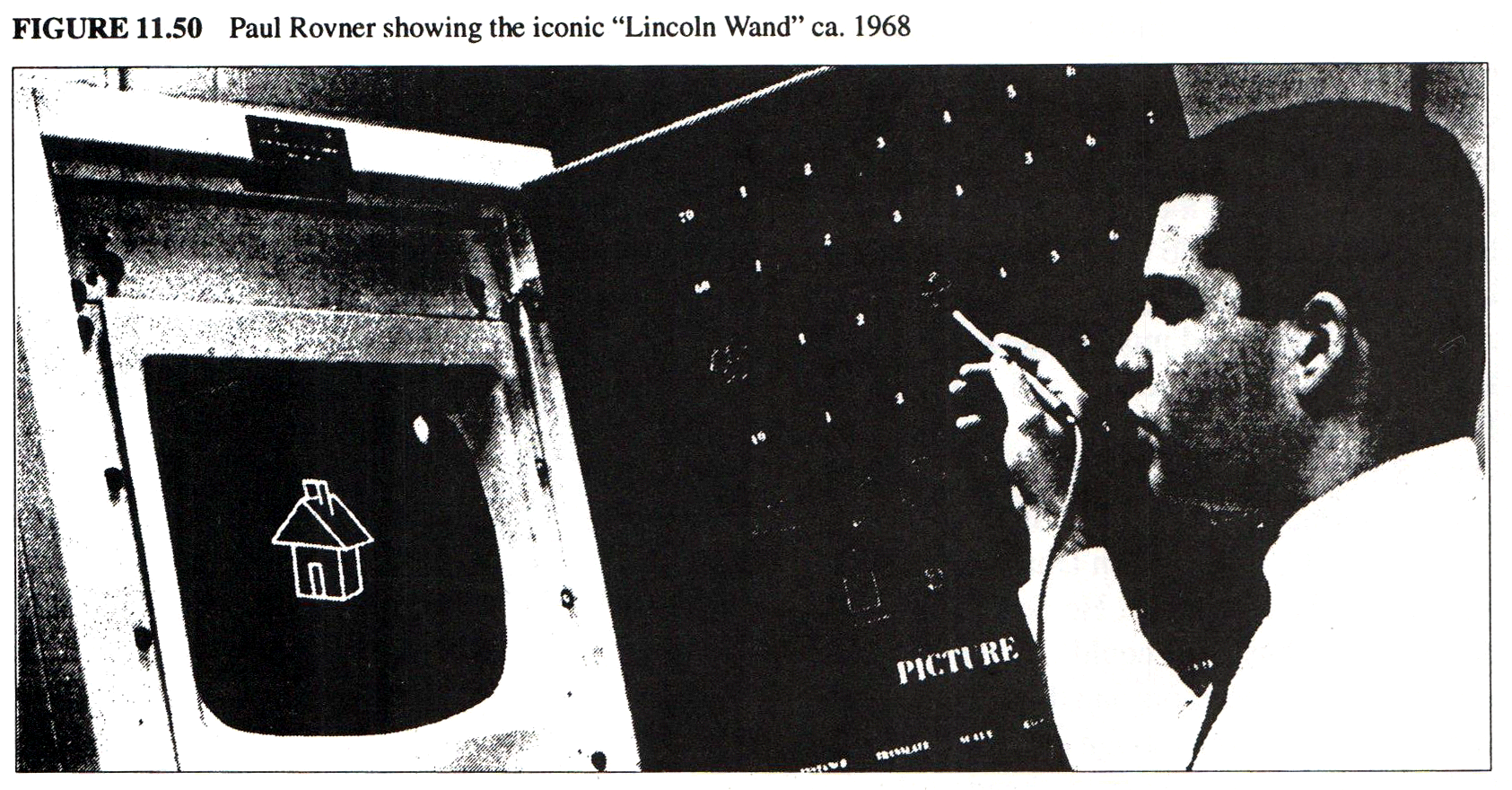
1967
- Appel hidden line algorithm
- Steven Coons publishes his surface patch “little red book” (Ref: Coons, Steven A. 1967. Surfaces for Computer-aided Design of Space Forms , Project MAC Report MAC-TR-41. Massachusetts Institute of Technology, Cambridge, Mass.)
- Sine Curve Man and Hummingbird created by Chuck Csuri
- MIT’s Center for Advanced Visual Studies founded by Gyorgy Kepes
1968
- DEC 338 intelligent graphics terminal
- Tektronix 4010
- Intel founded
- University of Utah asks Dave Evans to form a CG department in computer science
- Warnock algorithm
- Watkins algorithm
- Permutations – John Whitney, Sr.
- Sutherland Head Mounted Display
- Evans & Sutherland Calma, Computek, Houston Instrument, Imlac founded
1969
- Computer Space arcade game built by Nolan Bushnell
- Xerox PARC founded
- Lee Harrison’s CAESAR animation system
- Bell Labs builds first framebuffer (3 bits)
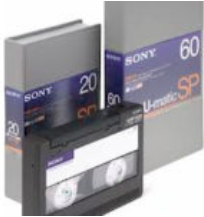
U-matic Tape - Sony U-Matic 3/4″ video cassette
- 1st use of CGI for commercials – MAGI for IBM
- SIGGRAPH formed
- ComputerVision, Applicon, Vector General founded
- ARPANET is born
- Graphical User Interface (GUI) developed by Xerox (Alan Kay)
1970
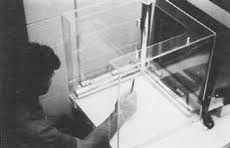
- Sonic Pen 3-D input device
- Watkins algorithm for visible surfaces
- Lillian Schwartz produces Pixellation at Bell Labs
- Pierre Bezier from Renault develops Bezier freeform curve representation
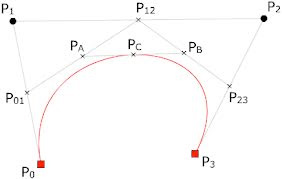
Bezier Curve
1971
- Gouraud shading
- Ramtek founded
- GINO – Cambridge University
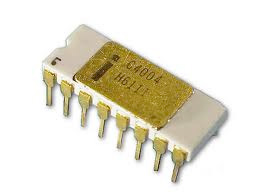
Intel 4004 - Intel 4004 4-bit processor
- Interactive Graphics for Computer-Aided Design (Prince) published
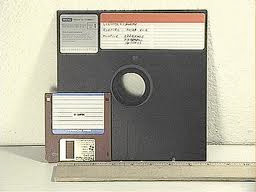
Floppy Disk - Floppy disk (8″) – IBM
1972
- MAGI Synthevision started
- CGRG founded at Ohio State
- NASA IPAD initiative started
- Graphics Standards Planning Committee organized by ACM-SIGGRAPH
- The @ symbol selected for email addresses by BBN
- Emmy awarded to Lee Harrison for SCANIMATE
- Alto computer introduced by Xerox PARC (Alan Kay)

Intel 8008 - Megatek, Summagraphics, Computervision, Applicon founded
- Utah hand (Catmull) and face (Parke) animations produced
- Computer Graphics and Image Processing journal begins publication
- 8-bit frame buffer developed by Dick Shoup at Xerox PARC
- Sandin Image Processor – Dan Sandin, Univ. Illinois-Chicago Circle
- Atari formed (Nolan Bushnell)
- Newell, Newell and Sancha visible surface algorithm
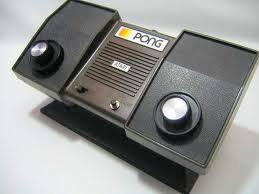
Pong - Video game Pong developed for Atari
- Graphics Symbiosis System (GRASS) developed at Ohio State by Tom DeFanti
1973
- E&S begins marketing first commercial frame buffer
- Ethernet – Bob Metcalf (Harvard)
- Quantel founded
- Westworld – uses 2D graphics
- Circle Graphics Habitat founded at Univ. Illinois Chicago (Tom DeFanti & Dan Sandin)
- Moore’s Law (the number of transistors on a microchip will double every year and a half) by Intel’s chairman, Mr. Gordon Moore
- Nolan Bushnell’s video game Computer Space appears in movie Soylent Green

Portapak - 3/4 inch Portapack replaces 16mm film for news gathering
- Richard Shoup develops PARC raster display
- Rich Riesenfeld (Syracuse) introduces b-splines for geometric design
1974
- Motion Pictures Product Group formed at III by John Whitney, Jr. and Gary Demos
- Alex Schure opens CGL at NYIT, with Ed Catmull as Director
- Barnhill and Riesenfeld introduce the name “Computer-Aided Geometric Design” (CAGD)
- SuperPaint developed by Dick Shoup and Alvy Ray Smith
- TCP protocol (Vint Cerf, Bob Kahn)
- Intel (Zilog) 8080
- Z-buffer developed by Ed Catmull (University of Utah)
- Futureworld (sequel to Westworld) uses 3D CGI (III)
- Hunger/La Faim produced by Peter Foldes at National Research Council of Canada; wins Cannes Film Festival Prix de Jury award for animation
1975
- Phong shading – Bui-Tuong Phong (University of Utah)
- fractals – Benoit Mandelbrot (IBM)
- Winged edge polyhedra representation (Bruce Baumgart)
- Catmull curved surface rendering algorithm
- Bill Gates starts Microsoft
- Quantel (QUANtized TELevision) introduces the DFS3000 Digital Framestore
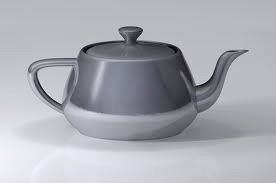
Teapot - Martin Newell (Utah) develops CGI teapot (physical teapot now in the Computer Museum in Boston)
- JPL Graphics Lab developed (Bob Holzman)
- Arabesque completed (John Whitney)
- Anima animation system developed at CGRG at Ohio State (Csuri)
1976
- MIT’s Visible Language Workshop founded by Muriel Cooper
- Ed Catmull develops “tweening” software (NYIT)
- Jim Clark’s Hierarchical model for visible surface detection
- Jim Blinn develops reflectance and environment mapping (University of Utah)
- Nelson Max’s sphere inversion film
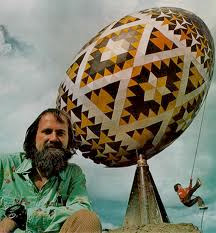
Pysanka - Ukrainian Pysanka Egg erected in Vegraville, Canada by Ron Resch
- Sony Beta home video
- Floppy disk (5 1/4″)
- Apple 1 (Wozniak)
- Computer Graphics Newsletter started by Joel Orr;
- Peter Fonda’s head digitized and rendered by III for Futureworld
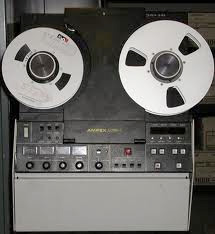
VPR-1 - Artist and Computer, by Ruth Leavitt
- Mathematical Elements for Computer Graphics (David Rogers) published
- Steve Jobs and Steve Wozniak start Apple computer.
1977
- Apple Computer incorporated
- Frank Crow introduces antialiasing
- Jim Blinn introduces a new illumination model that considers surface “facets”
- Academy of Motion Pictures Arts and Sciences introduces Visual Effects category for Oscars
- R/Greenberg founded (Richard and Robert Greenberg)
- SIGGRAPH CORE Graphics standard
- Ampex ESSTM (Electronic Still Store) system introduced for network sports slo-mo
- Larry Cuba produces Death Star simulation for Star Wars
1978
- Tom DeFanti’s GRASS system rewritten for Bally home computer (Zgrass)
- Digital Effects founded (Judson Rosebush, Jeff Kleiser, et al)
- Lance Williams curved shadows paper
- Ikonas frame buffer – England/Whitton
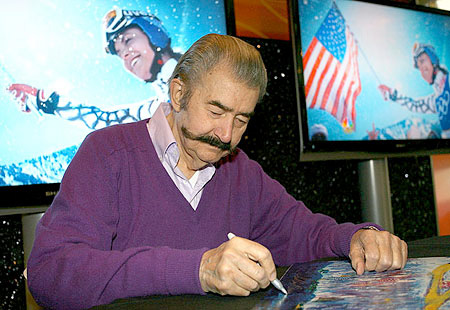
Leroy Nieman - Leroy Neiman uses Ampex AVA-1TM video art system to draw (on air) football players in Super Bowl XII
- 1st CGI film title – Superman (R. Greenberg)
- James Blinn produces the first of a series of animations titled The Mechanical Universe
- Bump mapping introduced
1979
- National Computer Graphics Association (NCGA) organized by Peter Preuss of ISSCO and Joel Orr
- IGES graphics file format specified

IBM 3279 - Motorola 68000 32-bit processor
- Atari 8-bit computers introduced
- Disney produces The Black Hole using CGI for the opening
- George Lucas hires Ed Catmull, Ralph Guggenheim and Alvy Ray Smith to form Lucasfilm
- Sunstone – Ed Emshwiller (NYIT)
1980s
1980
- Vol Libre – Loren Carpenter of Boeing
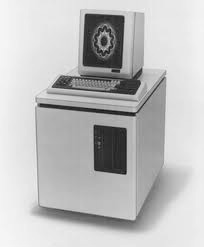
Apollo Computer - Apollo Computer founded – introduces the 68000 based DN100 workstation
- Turner Whitted of Bell Labs publishes ray tracing paper
- First NCGA conference – Arlington, Virginia – Steven Levine, President
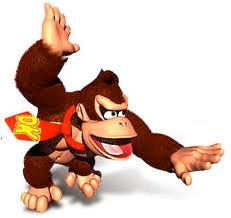
Donkey Kong - Donkey Kong introduced by Nintendo (Mario named in US release)
- IBM licenses DOS from Microsoft
- Apple Computer IPO – 4.6M shares @ $22
- Aurora Systems founded by Richard Shoup
- SIGGRAPH Core standard reorganized as ANSC X3H3.1
- EUROGRAPHICS (The European Association for Computer Graphics) formed; first conference at Geneva
- Disney contracts Abel, III, MAGI and DE for computer graphics for the movie Tron
- MIT Media Lab founded by Nicholas Negroponte
- Pacific Data Images founded by Carl Rosendahl
- Hanna-Barbera, largest producer of animation in the U.S., begins computer automation
- Quantel introduces Paintbox
1981
- Sony Betacam
- Tom DeFanti expands GRASS to Bally Z-50 machine (ZGRASS) – University Illinois – Chicago Circle
- IBM introduces the first IBM PC (16 bit 8088 chip)
- DEC introduces VT100
- IEEE Computer Graphics and Applications published by IEEE Computer Society and NCGA
- Ampex ADO® system introduced; garners an Emmy award in 1983
- Digital Productions formed by Whitney and Demos
- Cranston/Csuri Productions founded by Chuck Csuri, Robert Kanuth and Jim Kristoff.
- R/Greenberg opens CGI division (Chris Woods)
- MITI Fifth Generation Computer Project announced by Japanese Ministry of International Trade and Industry
- REYES renderer written at LucasFilm
- Penguin Software (now Polarware) introduces the Complete Graphics System
- Looker includes the virtual human character Cindy (Susan Dey) – 1st film with shaded graphics(III)
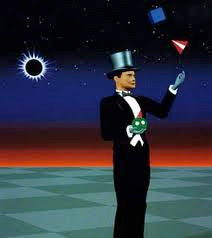
Adam Powers - Adam Powers, the Juggler produced by III
- Carla’s Island – Nelson Max
1982
- The Last Starfighter (Digital Productions) begins production
- Tron released
- The Geometry Engine (Clark)
- Jim Clark founds Silicon Graphics Inc.
- Sun Microsystems founded (sun := Stanford University Network)
- Alain Fournier , Don Fussell , Loren Carpenter, Computer Rendering of Stochastic Models. Communications of the ACM, v.25 n.6, p.371-384, June 1982 (Fractal Rendering paper)
- Skeleton Animation System (SAS) developed at CGRG at Ohio State (Dave Zeltzer)
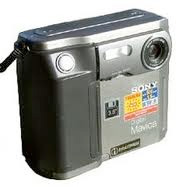
Mavica - Sony still frame video camera (Mavica)
- ACM begins publication of TOG (Transactions on Graphics)
- Tom Brighham develops morphing (NYIT)
- Adobe founded by John Warnock
- Toyo Links established in Tokyo
- Quantel Mirage
- Symbolics Graphics Division founded
- EPCOT Center opens
- Atari develops the data glove.
- Where the Wild Things Are test (MAGI) – digital compositing used to combine CG backgrounds and traditional animation
- AutoDesk founded; AutoCAD released
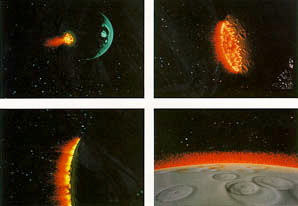
Frames from the Genesis Effect - ILM computer graphics division develops “Genesis effect” for Star Trek II – The Wrath of Khan
1983
- Particle systems (Reeves – Lucasfilm)
- Computer Graphics SGI IRIS 1000 graphics workstation
- Non-Uniform Rational B-Splines (NURBS) introduced by Tiller (Note: this date is somewhat misleading, since the concept built on the work of Vesprille (1975), Riesenfeld (1973), Knapp (1979), Coons (1968) and Forrest (1972))
- Road to Point Reyes created – Lucasfilm
- The Last Starfighter released
- Jim Blinn receives the first (1983) ACM SIGGRAPH CG Achievement Award
- Ivan Sutherland receives the first (1983) ACM SIGGRAPH Steven A. Coons Award
- Steve Dompier’s “Micro Illustrator”
- UNIX System V
- Utah Raster Toolkit introduced (Spencer Thomas)
- Autodesk introduces first PC-based CAD software
- Alias founded in Toronto by Stephen Bingham, Nigel McGrath, Susan McKenna and David Springer mip-mapping introduced for efficient texture mapping (Williams – NYIT) (Ref: Williams, Lance. Pyramidal Parametrics. Computer Graphics (SIGGRAPH 83 Proceedings) 17(3) July 1983, p. 1-11.

Sony CD Player - Sony and Philips introduce 1st CD player
- Wacom Co., Ltd started in Japan
1984
- Robert Abel & Associates produces the 1st computer generated 30 second commercial used for Super Bowl (Brilliance)
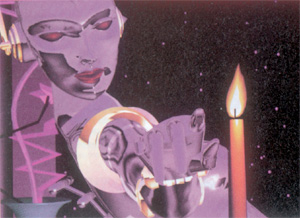
Scene from Brilliance - Wavefront Technologies is the first commercially available 3D software package (founded by Mark Sylvester, Larry Barels and Bill Kovacs )
- Thomson Digital Image (TDI) founded
- Jim Clark receives the 1984 ACM SIGGRAPH CG Achievement Award
- International Resource Development report predicts the extinction of the keyboard in the next decade
- A-buffer (or alpha-buffer) introduced by Carpenter of Lucasfilm
- Distributed ray tracing introduced by Lucasfilm
- Cook shading model (Lucasfilm)
- 14.5 minute computer generated IMAX film (The Magic Egg) shown at SIGGRAPH 84
- Universal Studios opens CG department
- First Macintosh computer is sold; introduced with Clio award winning commercial 1984 during Super Bowl
- McDonnel Douglas introduces the Polhemus 3Space digitizer and body Tracker

Cornell Box - The Cornell Box invented by Cohen
- Radiosity born – Cornell University
- John Lasseter joins Lucasfilm
- Motorola 68020
- Digital Productions (Whitney and Demos) get Academy Technical Achievement Award for CGI simulation of motion picture photography
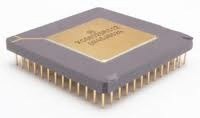
Motorola 68020 - Lucasfilms introduces motion blur effects
- Porter and Duff compositing algorithm (Lucasfilm)
- The Adventures of Andre and Wally B. (Lucasfilm)
1985
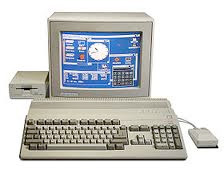
- Commodore launches the new Amiga
- Max Headroom – computer-mediated live action figure
- Judson Rosebush Co. started
- Abel Image Research takes Robert Abel & Associates to shaded graphics business
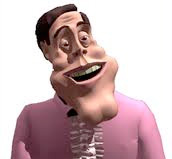
Tony De Peltrie - Tony de Peltrie airs
- stereo TV
- Biosensor (Toyo Links)
- Cray 2
- GKS standard
- Quantel Harry is first non-linear editor
- UNIX X10R1
- CGW predicts 90s graphics workstation
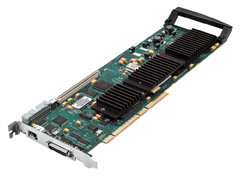
Targa - Targa 16 board (AT&T) goes to market
- Pixar Image Computer goes to market
- NeXT Incorporated founded by Steve Jobs and five former Apple senior managers
- Perlin’s noise functions introduced (Ref: Perlin, Ken. An Image Synthesizer. Computer Graphics (SIGGRAPH 85 Proceedings) 19(3) July 1985, p. 287-296.)
- CD-ROMs High Sierra (ISO9660) standard introduced
- PostScript (Adobe – John Warnock)
- PODA creature animation system developed by Girard and Maciejewski at Ohio State (Ref: Girard, Michael and A. A. Maciejewski. Computational Modeling for the Computer Animation of Legged Figures. Computer Graphics (SIGGRAPH 85 Proceedings) 19(3) July 1985, p. 263-270.)
- Boss Films founded by Richard Edlund
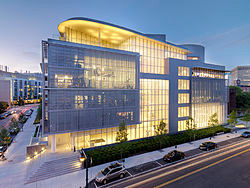
Media Lab - MIT Media Lab moves to new home
- Young Sherlock Holmes stained glass knight (Lucasfilm), 2010 (Boss Films)and Looker (DP)
1986
- The Great Mouse Detective was the first animated film to be aided by CG.
- Pixar purchased from Lucasfilm by Steve Jobs
- X-Window System (MIT Project Athena)
- Trancept Systems founded by Nick England and Mary Whitton – graphics board for Sun
- CGI group starts at Industrial Light and Magic (Doug Kay and George Joblove)
- Softimage founded by Daniel Langlois in Montreal
- Computer Associates acquires ISSCO
- Microsoft goes public (IPO raises $61M; share prices go from $21 to $28)
- Apple IIgs introduced
- Silicon Graphics Incorporated IPO
- SGI IRIS 3000 (MIPS processor)
- Turner Whitted receives the 1986 ACM SIGGRAPH CG Achievement Award
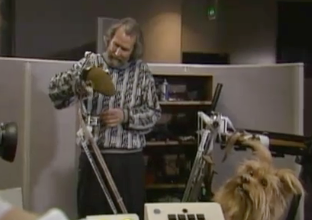
Jim Henson – Waldo - Jim Henson Waldo project introduces motion capture (Digital Productions)
- Kajiya’s Rendering Equation
- Omnibus assumes Robert Able & Associates and Digital Productions
- Whitney/Demos Productions founded
- Luxo Jr. nominated for Oscar (first CGI film to be nominated – Pixar)
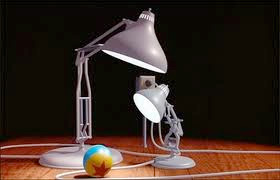
- TIFF (Aldus)
- Scitex founded for prepress
1987
- GIF format (CompuServe), JPEG format (Joint Photographic Experts Group)
- Willow (Lucasfilm) popularizes morphing
- Max Headroom debuts
- LucasArts formed
- CGM (Computer Graphics Metafile) standard
- Side Effects Software established
- VGA (Video Graphivs Array) invented by IBM
- Windows 2.0, MS/OS 2, Excel
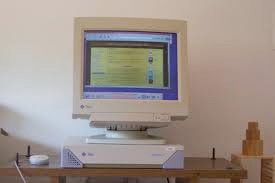
Sparc Station 4 - Sun 4 SPARC workstation
- Reynolds’ flocking behavior algorithm (Symbolics) (Ref: Reynolds, Craig W. Flocks, Herds and Schools: A Distributed Behavior Model. Computer Graphics (SIGGRAPH 87 Proceedings) 21(4) July 1987, p. 25-34.)
- Stanley and Stella in: Breaking the Ice
- Rob Cook receives the 1987 ACM SIGGRAPH CG Achievement Award
- Don Greenberg receives the 1987 ACM SIGGRAPH Steven A. Coons Award
- Advanced Computing Center for the Arts and Design (ACCAD) founded at Ohio State (formerly CGRG)
- Omnibus closes, eliminating DP and Abel
- Cranston/Csuri Productions closes
- Marching Cubes algorithm (Lorensen and Cline – GE) (Ref: Lorensen, William and Harvey E. Cline. Marching Cubes: A High Resolution 3D Surface Construction Algorithm. Computer Graphics (SIGGRAPH 87 Proceedings) 21(4) July 1987, p. 163-170. )
- Metrolight Studios, RezN8 Productions, Kleiser/Walczak Construction Co., DeGraf/Wahrman founded
- Adobe Illustrator
